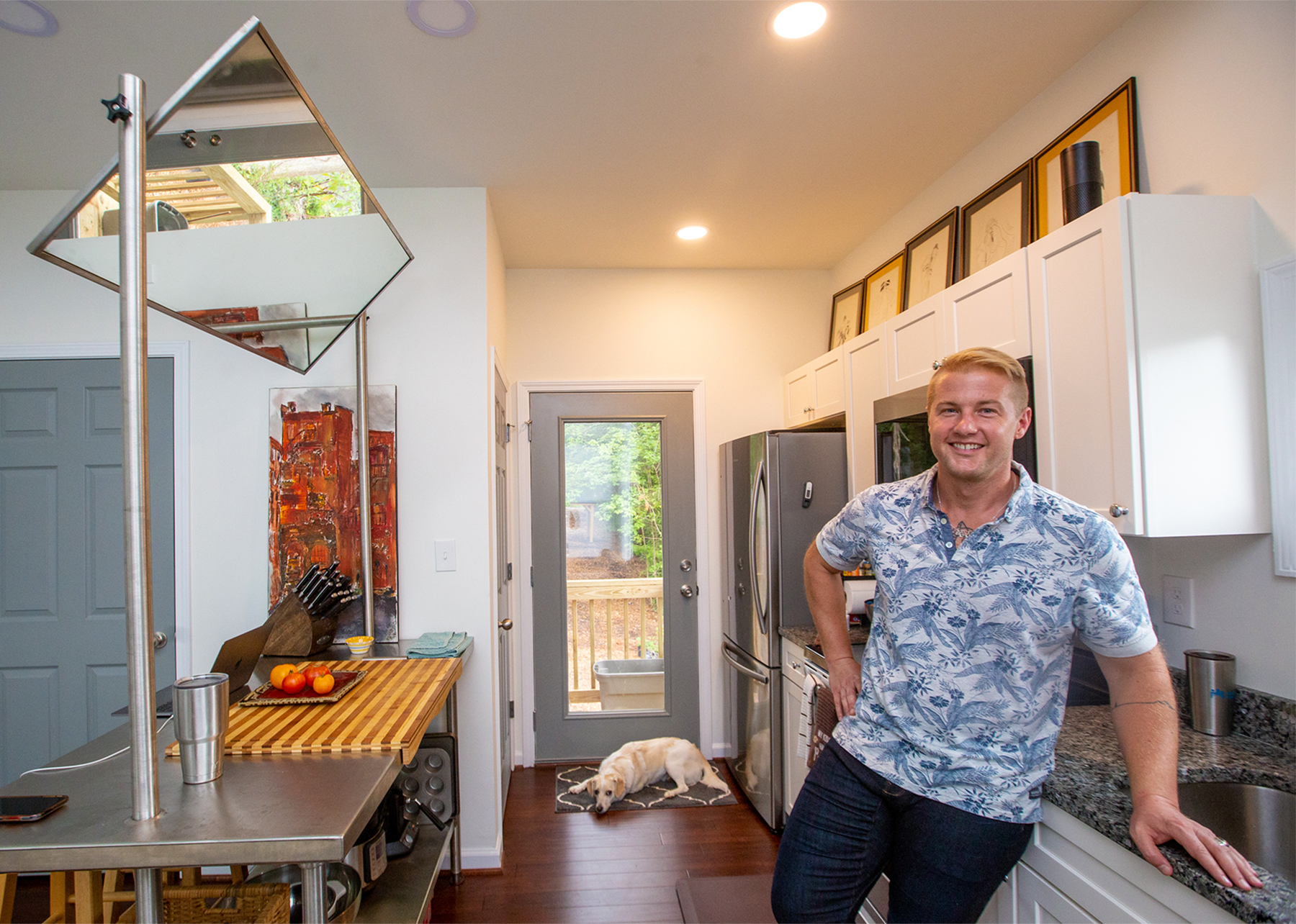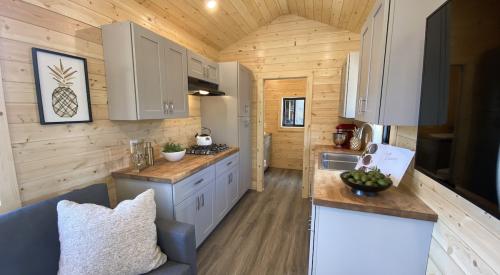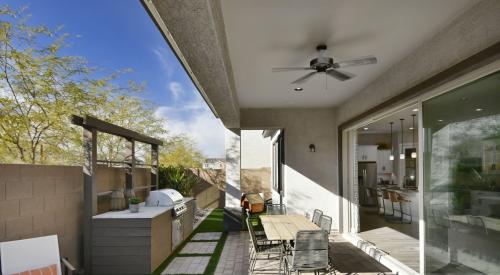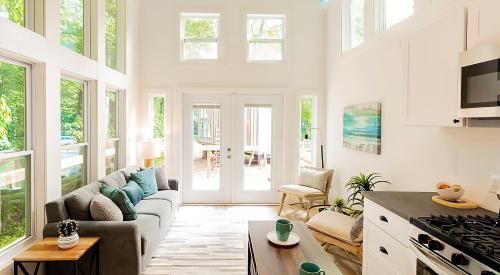Innovative builders have been exploring a range of cutting-edge construction technologies to help reduce costs and improve efficiency. Atlanta’s MicroLife Institute touts another method for achieving the same goals: just build smaller houses.
“One of the obvious ways to decrease cost is to decrease space,” says Kim Morrison, CFO and board chair, MicroLife Institute, a nonprofit that educates government agencies and others on the benefits of micro living.
Simply put, smaller structures need fewer materials and consume less energy.
COTTAGES ON VAUGHAN
This year, MicroLife Institute completed its first tiny homes development, Cottages on Vaughan. In Clarkston, Georgia, a half-hour drive from downtown Atlanta, Cottages on Vaughan consists of eight tiny houses. One is only 250 square feet; the other seven are each 492 square feet plus about 200 square feet of loft space. All eight cottages sit on just over half an acre of land.
Compare that to the size of a new single-family home, which averages 2,333 square feet. American homes didn’t always take up so much space: the average house size has more than doubled since the 1950s. Ironically, the size of the average US household has gone the opposite direction—from about 3.5 people midcentury to about 2.5 today.
Smaller is simply more sustainable, Morrison says. The units’ modest footprint, along with an electric Mitsubishi mini-split heating and cooling unit, keeps energy usage low. In addition, Atlanta architect Patrick Chopson used his cove.tool software to optimize the community’s energy efficiency, designing each unit with enough windows to eliminate the need for daytime electric lighting and to allow for natural ventilation. Will Johnston, MicroLife’s executive director and a unit owner, says his monthly power bill ranges from just $45 to $55.
In November, the Atlanta Regional Commission, the planning and intergovernmental coordination agency for the 10-county Atlanta region, awarded Cottages on Vaughan for its innovative development.
Johnston points to a less tangible asset of tiny homes. They create what Seattle-area architect (and MicroLife mentor) Ross Chapin has dubbed “pocket neighborhoods,” which promote a sense of community. Cottages on Vaughan also achieve that communal vibe with sizable front porches facing a shared courtyard that features edible, regenerative landscaping. Also, a pathway connects each unit as it leads to the parking lot off to the side.
“It’s not that they’re tiny, that's the fascinating part. What draws people here is the community aspect,” Johnston says.
Tiny homes like Cottages on Vaughan can help fill the nation’s shortage of starter homes, Morrison says. But the idea isn’t to stop constructing large homes and only build small ones. “We’re not saying everybody needs to live micro,” Johnston says, “but we need more options than McMansions.”
Homebuyers agree—if the interest in Cottages on Vaughan is any indication. The development had a waitlist of 1,500 potential buyers.
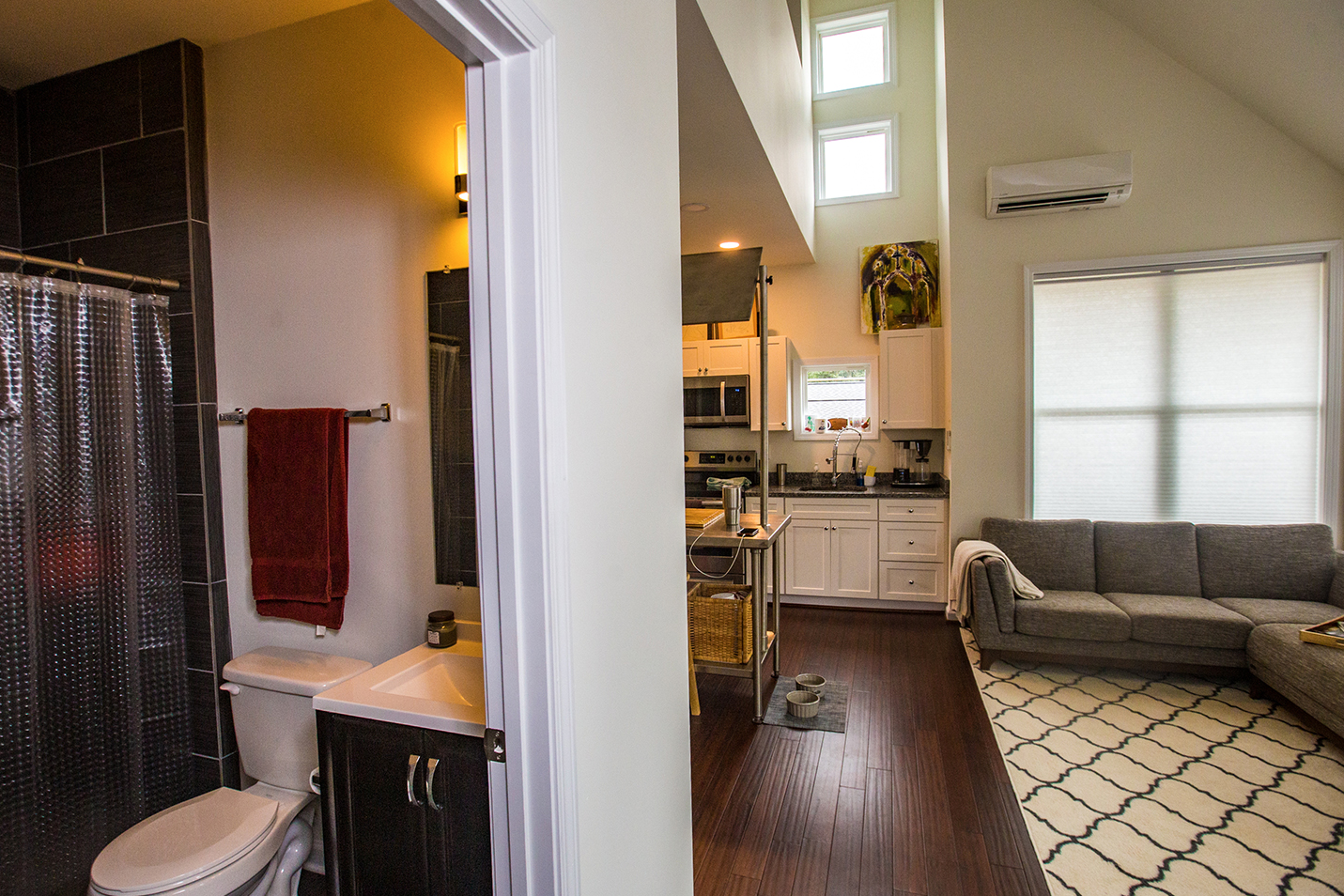
THE SMALL EXPENSE OF TINY LIVING
MicroLife sold the first five units to buyers with construction loans at prices ranging from $109,000 to $155,000, plus an additional $8,000 for solar panels (an option for four of the eight units). Morrison says the builder, Fortas Homes, which constructs smaller, affordable homes, saw a solid profit margin on those units—but MicroLife as the developer only broke even.
Yet MicroLife sold the last three units at market rate to buyers with traditional mortgages. Almost a hundred people showed up at an open house for those properties. And they sold above the listing price, going for $184,000 to $201,000. “That was a great return,” Morrison says. With tiny homes, she says, “builders can have a good product with a good profit margin.”
That’s true, she adds, even with higher per-square-foot costs—and even though MicroLife’s multi-unit development came with infrastructure expenses that a new single-home build wouldn’t incur. For instance, MicroLife had to install an underground stormwater detention system (which cost $40,000), as well as permeable pavers and larger sewer pipes.
Johnston and Morrison launched MicroLife Institute in 2016. The friends began advocating for micro living and hosting events that showcased small structures so people could imagine their lives inside them.
In 2018, Ted Terry, then mayor of Clarkston, attended one of those events. He asked Johnston and Morrison about developing a tiny homes community in his own town. MicroLife then worked with him to rewrite Clarkston’s cottage-court ordinance to allow for the construction of smaller homes on smaller lots. In 2019, the city council unanimously approved the updated ordinance. Terry then asked Johnston and Morrison to collaborate on a pilot project that ultimately became Cottages on Vaughan. Its final unit was finished in June.
“Cottages on Vaughan provides much-needed ownership opportunities in the area at an affordable price,” says Samyukth Shenbaga, managing director of community development, Atlanta Regional Commission. “It also serves as an important demonstration project for other communities across the region that are striving to address their own housing challenges.”


